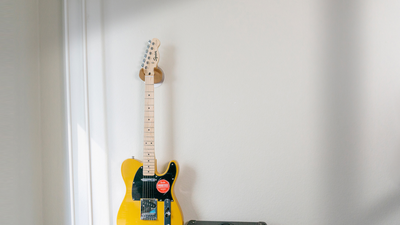Unleashing the Melodic Potential of Acoustic-Electric Guitars

The acoustic-electric guitar is a marvel in the world of musical instruments, seamlessly blending the warm, rich tones of an acoustic guitar with the amplified power of an electric guitar.
Whether you're a seasoned musician or a beginner, the acoustic-electric guitar offers a versatile and dynamic range of sounds that can enhance your musical journey.
In this blog, we will delve into the features, benefits, and tips for choosing the right acoustic-electric guitar for you.
What is an Acoustic-Electric Guitar?
An acoustic-electric guitar is essentially an acoustic guitar equipped with electronic components that allow it to be amplified.
This hybrid instrument maintains the traditional body and sound hole of an acoustic guitar but includes pickups, a preamp, and often an onboard equalizer to control the amplified sound.
This design enables musicians to enjoy the best of both worlds: the natural resonance of an acoustic guitar and the ability to project their sound to larger audiences without sacrificing quality.
Benefits of Acoustic-Electric Guitars
-
Versatility: One of the most significant advantages of an acoustic-electric guitar is its versatility. You can play it acoustically, enjoying the natural, unamplified sound, or plug it into an amplifier or PA system for a louder, more powerful performance. This makes it ideal for various settings, from intimate practice sessions to live concerts.
-
Sound Quality: The built-in electronics of an acoustic-electric guitar are designed to faithfully reproduce the instrument's natural sound when amplified. High-quality pickups and preamps ensure that the tonal characteristics are preserved, providing a clear and rich sound.
-
Convenience: With an acoustic-electric guitar, you no longer need to rely on external microphones for amplification, which can be cumbersome and prone to feedback issues. The onboard electronics streamline the setup process, making it easier to achieve a great sound in any environment.
-
Recording Flexibility: Acoustic-electric guitars offer excellent flexibility for recording. You can record the natural acoustic sound using a microphone or capture the direct signal from the guitar’s output jack. Many musicians use both methods simultaneously to achieve a fuller, more textured recording.
Choosing the Right Acoustic-Electric Guitar
When selecting an acoustic-electric guitar, several factors should be considered to ensure you find the right instrument for your needs:
-
Body Style and Size: Acoustic-electric guitars come in various body styles and sizes, including dreadnought, concert, jumbo, and parlor. Each style has its unique tonal characteristics and comfort level. For instance, a dreadnought body produces a bold, powerful sound, making it ideal for strumming and flat-picking, while a concert body offers a balanced tone suitable for fingerstyle playing.
-
Tone woods: The choice of toonwoods significantly impacts the sound of an acoustic-electric guitar. Common toonwoods include spruce, cedar, mahogany, and rosewood. Spruce tops are known for their brightness and clarity, while cedar offers a warmer, mellower tone. Mahogany and rosewood are often used for the back and sides, adding depth and resonance to the sound.
-
Electronics: Pay attention to the quality and features of the guitar’s electronics. Look for reputable brands of pickups and preamps, and consider models with onboard tuners and equalizers for greater control over your sound. Some advanced systems even allow you to blend the signal from multiple pickups for enhanced tonal versatility.
-
Playability: The playability of a guitar is crucial, especially for beginners. Ensure that the guitar has a comfortable neck profile, smooth fretboard, and low action (the distance between the strings and the fretboard) to facilitate easy playing.
-
Budget: Acoustic-electric guitars are available in a wide range of prices. Set a budget that aligns with your needs and skill level. While it’s tempting to go for high-end models, there are many affordable options that offer excellent sound and build quality for beginners and intermediate players.
Maintenance Tips
To keep your acoustic-electric guitar in top condition, follow these maintenance tips:
-
Regular Cleaning: Wipe down the guitar after each use to remove sweat and dirt. Use a soft cloth and guitar-specific cleaning products to keep the finish and hardware in good shape.
-
String Care: Replace strings regularly to maintain optimal sound quality. Clean the strings after playing to extend their lifespan and prevent corrosion.
-
Proper Storage: Store your guitar in a case when not in use to protect it from dust, humidity, and temperature fluctuations. Consider using a humidifier in dry climates to prevent the wood from cracking.
-
Check Electronics: Periodically check the battery and connections of the onboard electronics. Replace the battery as needed and ensure that all components are functioning correctly.
Conclusion
The acoustic-electric guitar is a versatile and powerful instrument that opens up a world of musical possibilities.
Whether you're playing solo, recording in the studio, or performing live, this hybrid guitar offers the perfect blend of acoustic warmth and electric amplification.
By understanding its features, benefits, and maintenance needs, you can make an informed decision and enjoy the melodic potential of your acoustic-electric guitar for years to come.
also read: 7-String Guitar
